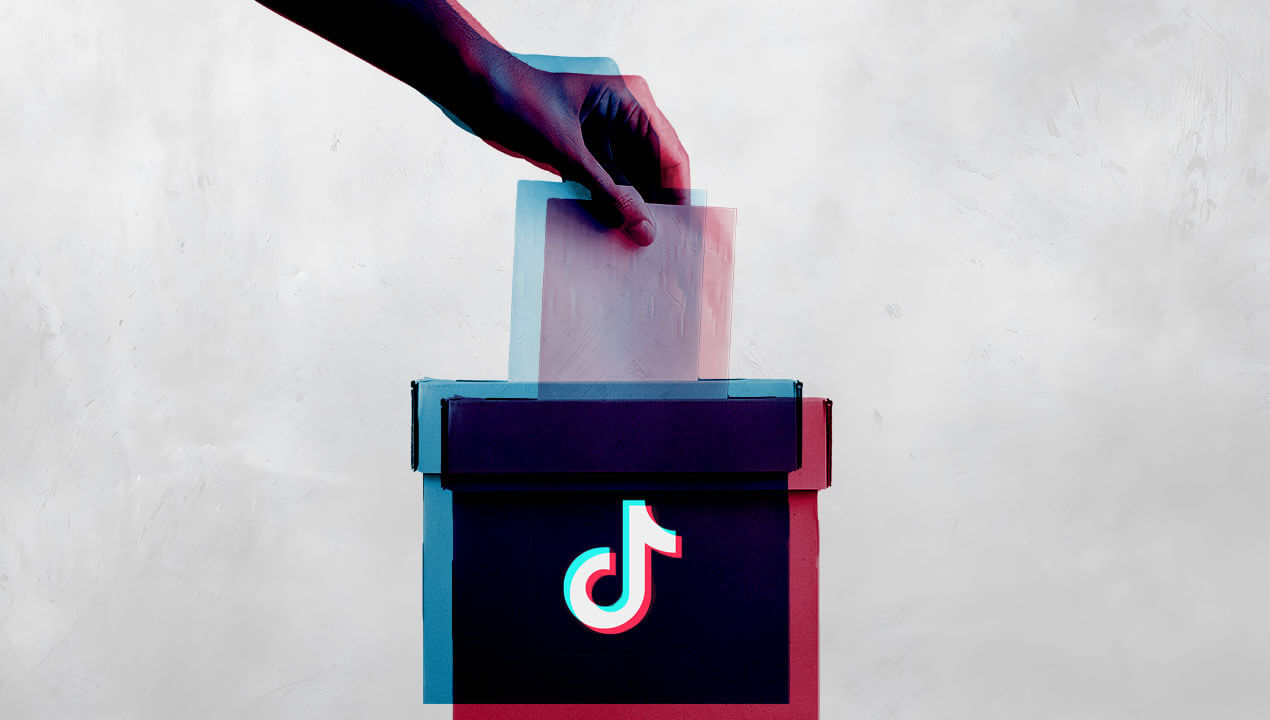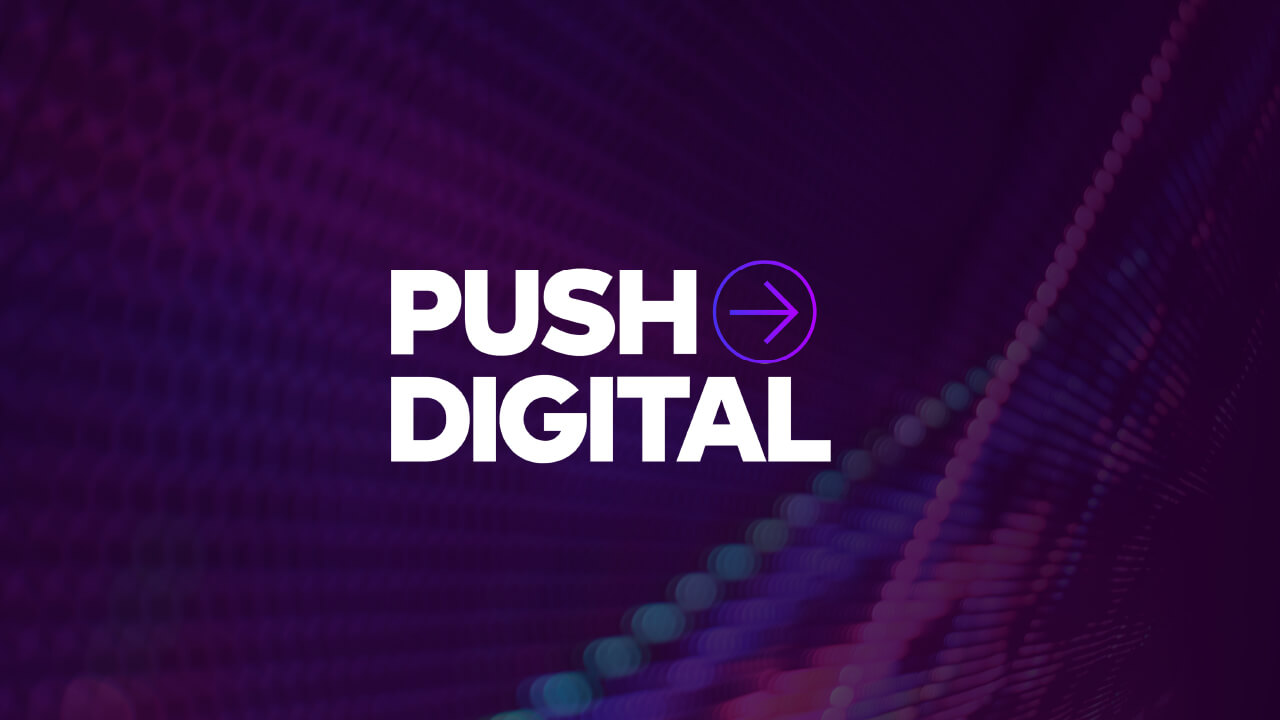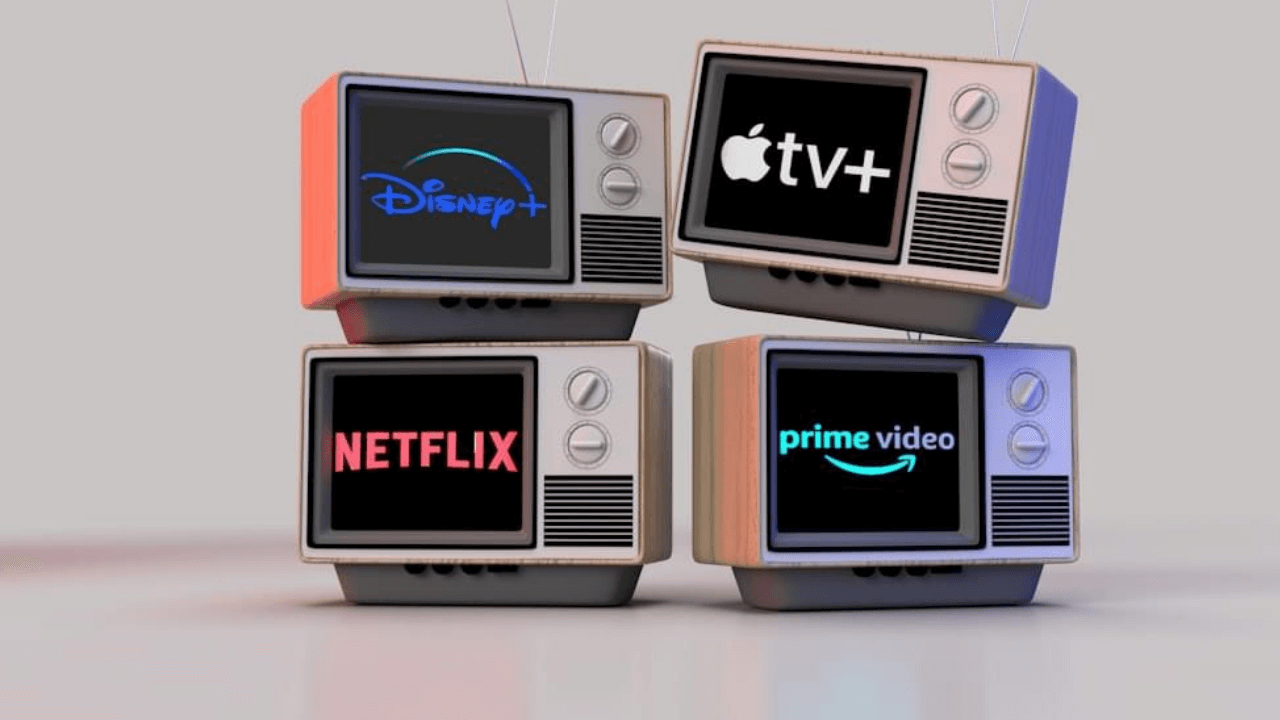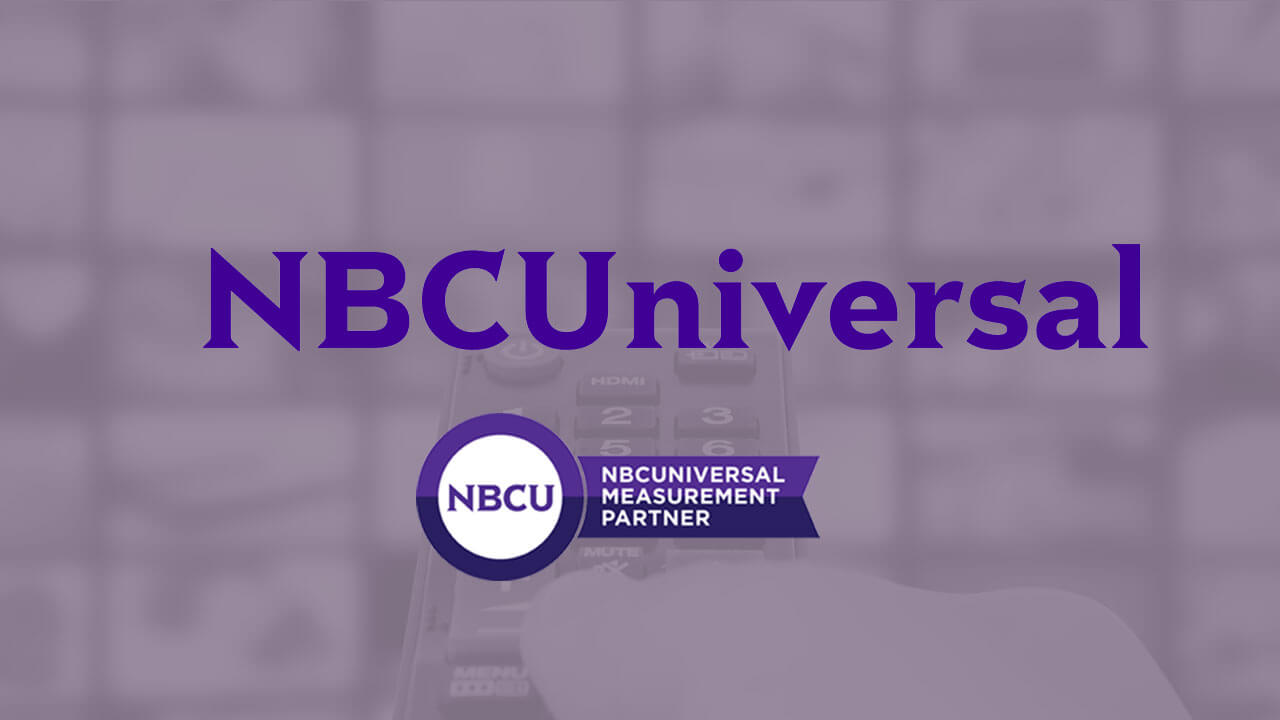Contents
- What Are Survey Incentives?
- When Should You Use Survey Incentives?
- How Do You Incentivize Survey Participation?
- What Are Good Incentives for Surveys?
- How Do You Choose the Right Incentive?
- What If Your Suppliers Choose Respondent Incentives?
- Conduct Incentivized Surveys with Cint’s Online Exchange
- Monetary Incentives
- Non-Monetary Incentives
- Hybrid Incentives
Categories
 You’ve created a well-designed survey with thoughtful questions and sent it out to your target respondents — but you don’t receive the responses you anticipated. Now, you’re wondering how you might draw a higher response rate.
Improving respondent incentives is a great way to increase response rates. While incentives are often determined by the supplier who provides respondents for your survey, you should always consider the importance of rewarding the people who participate in your surveys. Additionally, research has shown that survey incentives increase responses. Below, we’ll discuss what survey incentives are, when and how suppliers might use survey incentives and provide survey incentive ideas to improve survey response rate.
You’ve created a well-designed survey with thoughtful questions and sent it out to your target respondents — but you don’t receive the responses you anticipated. Now, you’re wondering how you might draw a higher response rate.
Improving respondent incentives is a great way to increase response rates. While incentives are often determined by the supplier who provides respondents for your survey, you should always consider the importance of rewarding the people who participate in your surveys. Additionally, research has shown that survey incentives increase responses. Below, we’ll discuss what survey incentives are, when and how suppliers might use survey incentives and provide survey incentive ideas to improve survey response rate.
What Are Survey Incentives?
If you’re new to the industry, you may not be familiar with survey incentives and how they impact respondent engagement. Survey incentives are rewards you provide to your respondents before or after completing a survey. You might offer monetary or non-monetary gifts. Survey incentives can also be prepaid — given to the respondent before they answer the questionnaire — or promised, which you send out only after the participants return the survey. You’ll need to choose survey incentives that align with your target market, budget and research goals. Incentives can be anything from cash offerings or gift cards to product trials or charitable donations. The breadth of options leaves you the freedom to align your incentives with your organization. While incentives help improve survey response rates, they can also act as a “thank you” to your participants for taking the time and energy to respond.When Should You Use Survey Incentives?
Any effective survey needs to generate enough data from which to draw inferences. In many cases, survey incentives will help you collect the responses you need. Situations in which you can benefit from using survey incentives include:- Specific populations: If you need to reach respondents with a specific set of attributes, consider adding an incentive to boost participation rates.
- Unlikely responders: Some populations might be less likely to respond than others. If you know your target population is incredibly busy or skeptical of surveys, providing an incentive might help you overcome the non-response barrier.
- Online participants: While hosting your survey online is critical in light of changing customer behaviors, you must consider how the digital environment impacts participation. Respondent devices contain many distractions that might lead to lower completion rates, but incentives can motivate them to finish the survey.
- Significant time commitments: Whether your survey is long or you need repeat participation, incentives can make respondents feel the time commitment is worth it.
- Sensitive questions: Likewise, an incentive can motivate respondents to answer questions they might otherwise prefer to avoid.
- Customer satisfaction surveys: Incentivizing customer satisfaction surveys might influence respondents’ attitudes and create a positive response bias.
- Unclear target audience: Survey incentives shouldn’t be used in place of proper targeting tactics. If you aren’t receiving responses, first consider whether you’ve defined your target population correctly. Offering incentives without a target population can generate unhelpful data that represents the wrong group of customers.
How Do You Incentivize Survey Participation?
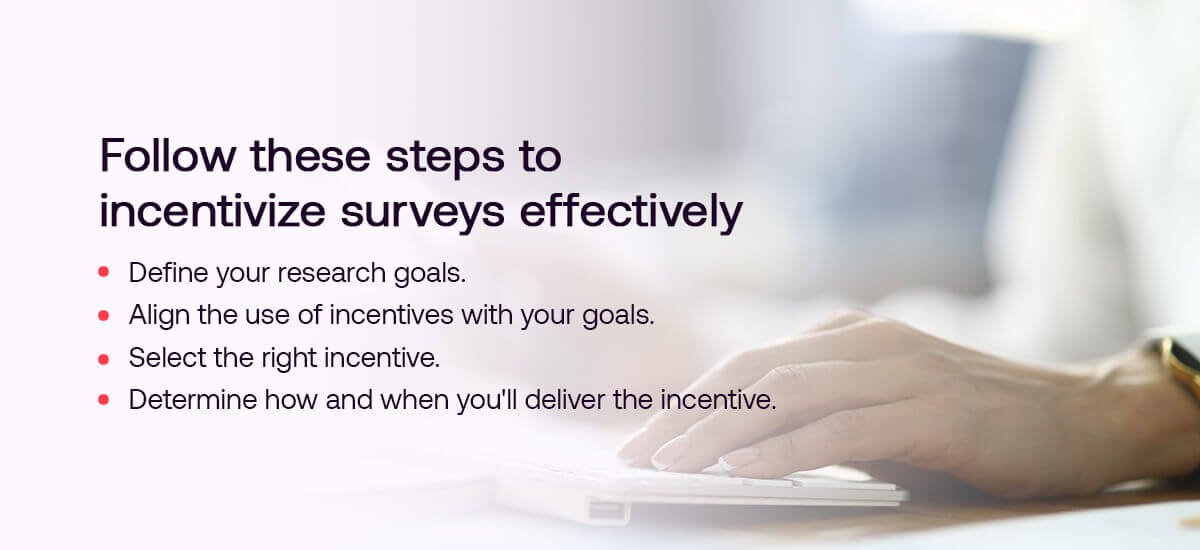 Follow these steps to incentivize surveys effectively:
Follow these steps to incentivize surveys effectively:
- Define your research goals.
- Align the use of incentives with your goals.
- Select the right incentive.
- Determine how and when you’ll deliver the incentive.
What Are Good Incentives for Surveys?
Survey incentives fall into three primary categories — monetary, non-monetary and hybrid. Each has a distinct set of benefits.Monetary Incentives
Monetary incentives are any gifts that directly correlate to a specific dollar value. Types of monetary incentives you might use include:- Cash: A direct cash offer can provide the most immediate increase in responses, but other incentives carry benefits alongside improved response rates. You’ll need to determine which advantages most appeal to your needs.
- Gift cards: If you run a business, you could offer gift cards to your store, providing the bonus of more store traffic. If you don’t have a business, you might supply gift cards to anywhere your target population enjoys.
- Coupons: Consider giving respondents a coupon to your store.
- Charitable donations: You might offer to donate on the respondent’s behalf. With this incentive, you’re making a difference, and you might incidentally improve how your audience feels about your company or organization.
Non-Monetary Incentives
Non-monetary incentives are any incentives not directly tied to a particular cash value. Some examples of non-monetary incentives include:- Product samples: Offer your respondents a product sample. This gift can be a great way for businesses to introduce their respondents to a new offering and potentially generate interest.
- Trial subscriptions: If you provide a subscription service, you could also incentivize your surveys with a free trial.
- Loyalty points: Do you have a loyalty program? If so, consider giving your survey participants loyalty points in exchange for their answers.
- Industry information: B2B companies and organizations can benefit from offering industry information such as white papers, webinars and industry reports. You’ll provide participants with gifts they’ll use while also helping position your brand as a thought leader. This incentive can also benefit pollsters or academics with an industry-specific target population.
- Survey points: If you need respondents to answer multiple surveys over time, offer them points that build with each completed survey. At the end of your survey series, they can redeem the points for the incentive.
Hybrid Incentives
Hybrid incentives sit at the intersection of monetary and non-monetary gifts. With hybrid incentives, you can choose to offer monetary prizes, non-monetary prizes or a combination thereof. Hybrid incentives include:- Sweepstakes: You could host online sweepstakes with a chance to win an exciting prize. Because a select few respondents will receive the prize, you have the freedom to come up with a more expensive incentive than you could otherwise. The more compelling the incentive, the more likely your sweepstakes will generate online buzz. More buzz can lead to more respondents and greater awareness of your brand or cause.
- Giveaways: Like sweepstakes, giveaways encourage respondents to enter to win prizes. However, chance comes into play in determining which incentive someone receives. For example, you could host a giveaway offering most respondents a coupon and one winner a cash prize in addition to the coupon. With sweepstakes, chance determines whether they win any prize.
- Games: Add some fun to the survey process by using a game format for your incentives. If the respondents want the prize, they’ll need to win the game.
How Do You Choose the Right Incentive?
When choosing the right incentive, you’ll need to keep survey best practices in mind. Top considerations include:- Target audience alignment: Customizing your incentive to the audience will generate a more significant effect. A dog leash might appeal to dog owners but not respondents without pets. Mismatching the incentive and audience can lead to a non-engaged respondents. Additionally, your incentive should intrigue each segment of your target population equally.
- Legal requirements: Sweepstakes must meet certain legal requirements. You should review these requirements with a legal professional before hosting sweepstakes as incentives.
- Confidentiality: Sometimes, you’ll need to collect email addresses or street addresses to deliver incentives. However, anonymity is often important in surveys. Reassure your respondents that their personal information will not be matched with their responses.
- Budget: Incentive costs can vary widely, so select an option that suits your budget and has the greatest potential return on investment.
What If Your Suppliers Choose Respondent Incentives?
In many cases, the person conducting research is not responsible for selecting respondent incentives; instead, the supplier determines the way respondents are rewarded for participating in a survey. If you are a buyer who wants to know how survey respondents are being incentivized, you can ask your supplier what their incentive plan looks like. Additionally, there are steps buyers can take to improve response rates without relying on incentives:- Increase CPI: By increasing the amount that you pay for survey responses (cost per interview), both the supplier and respondent are incentivized to get your survey completed.
- Decrease LOI: When you have a shorter length of interview, you increase the chances of a respondent completing it.





























